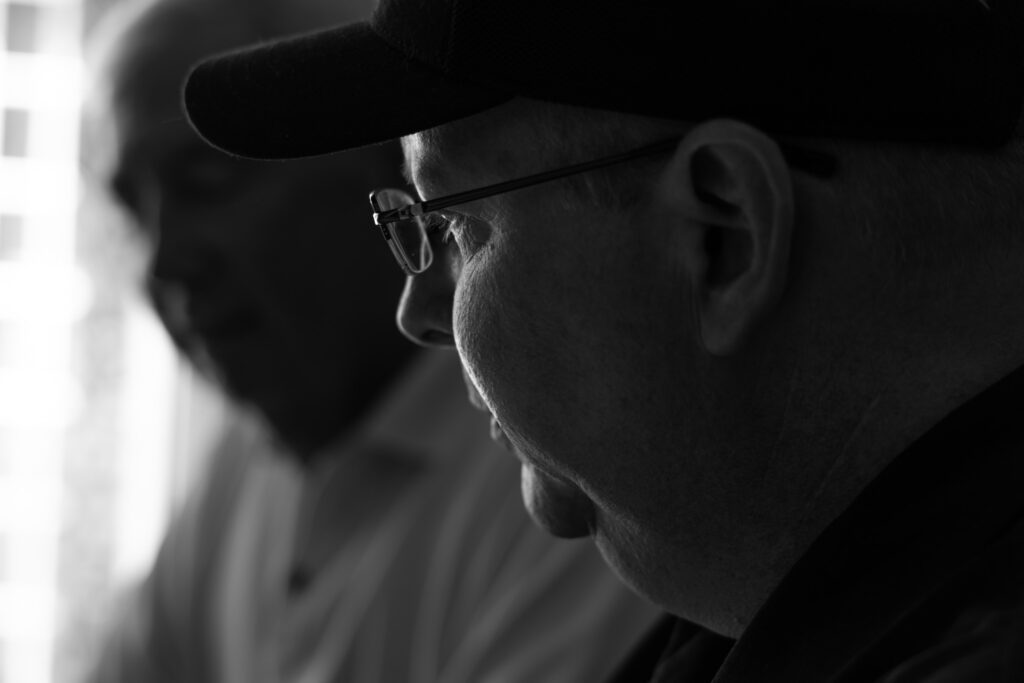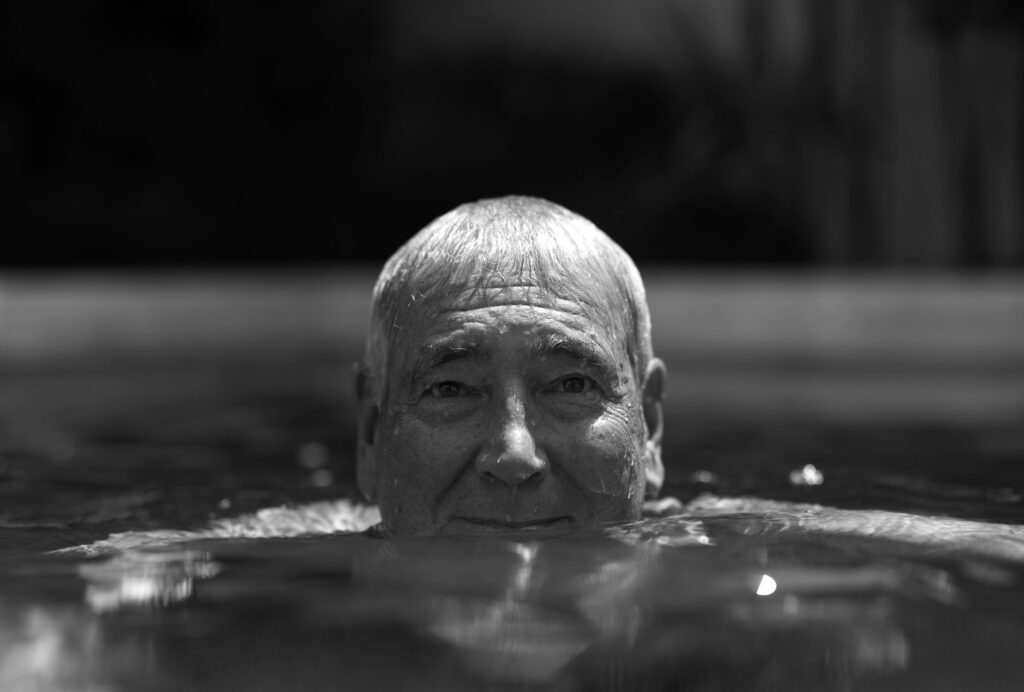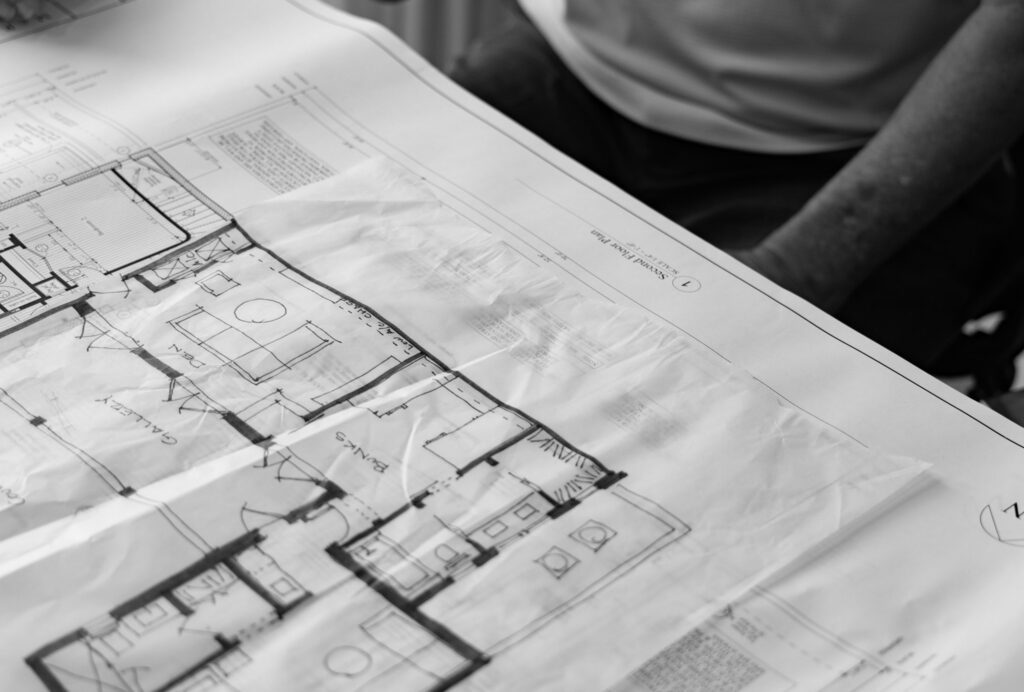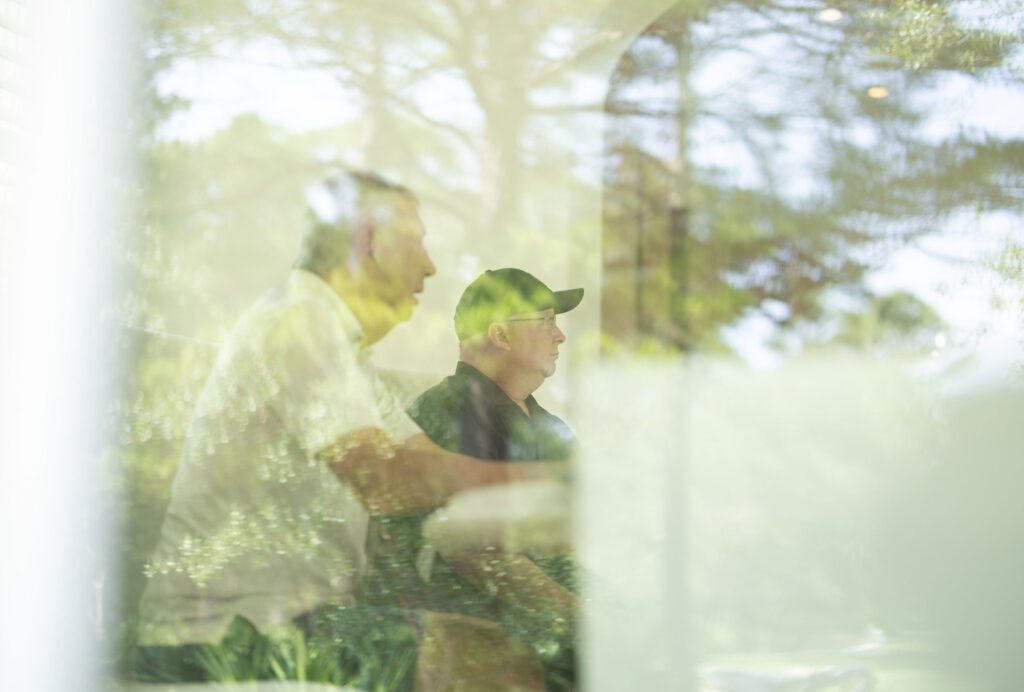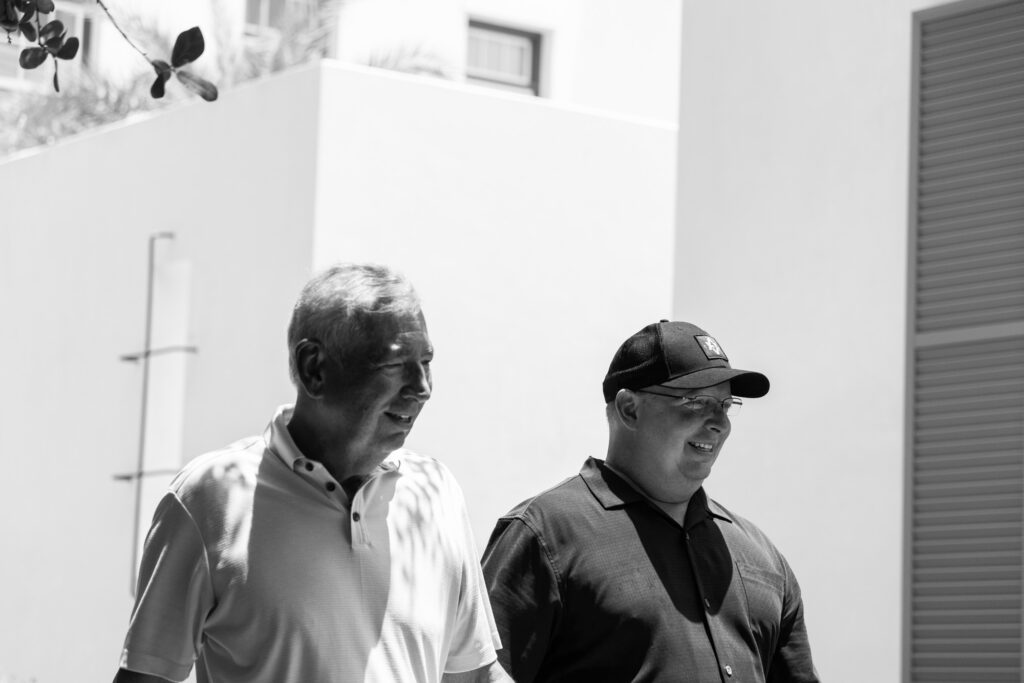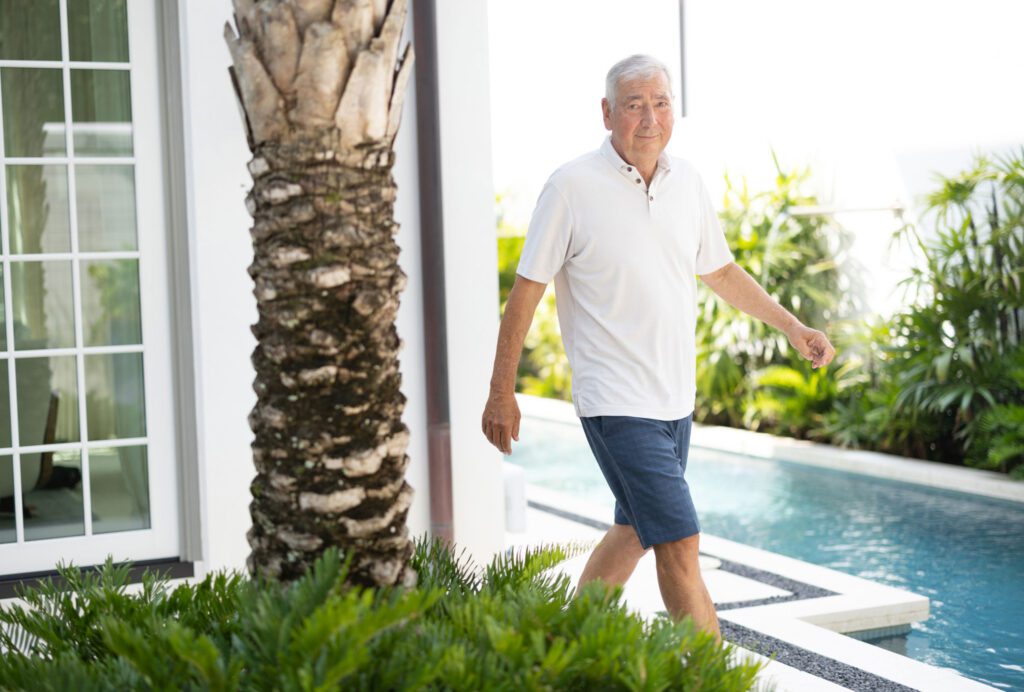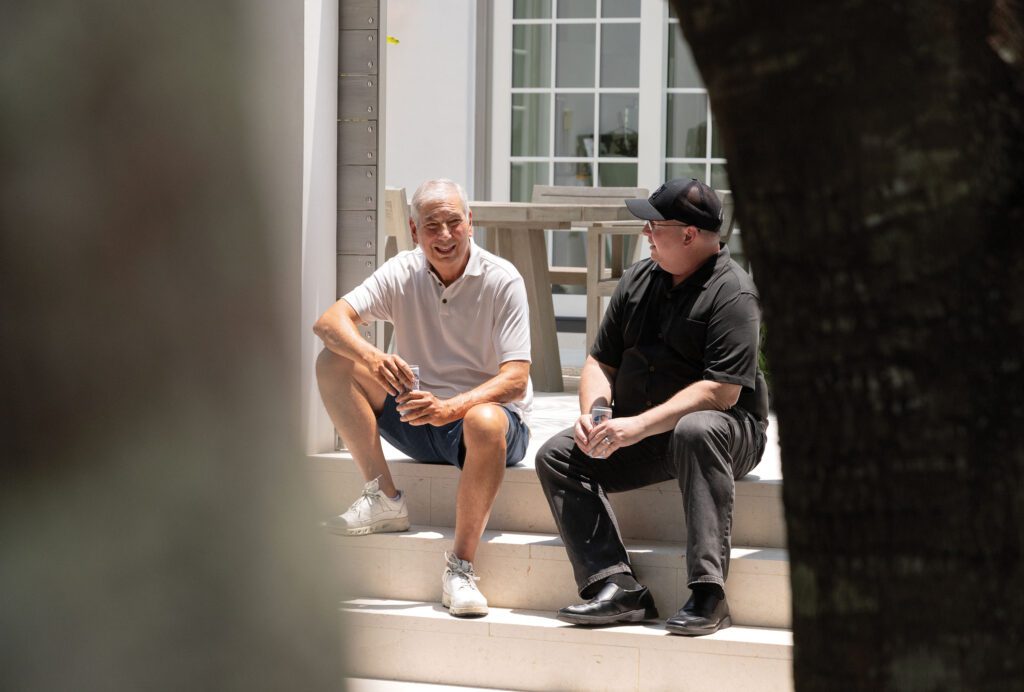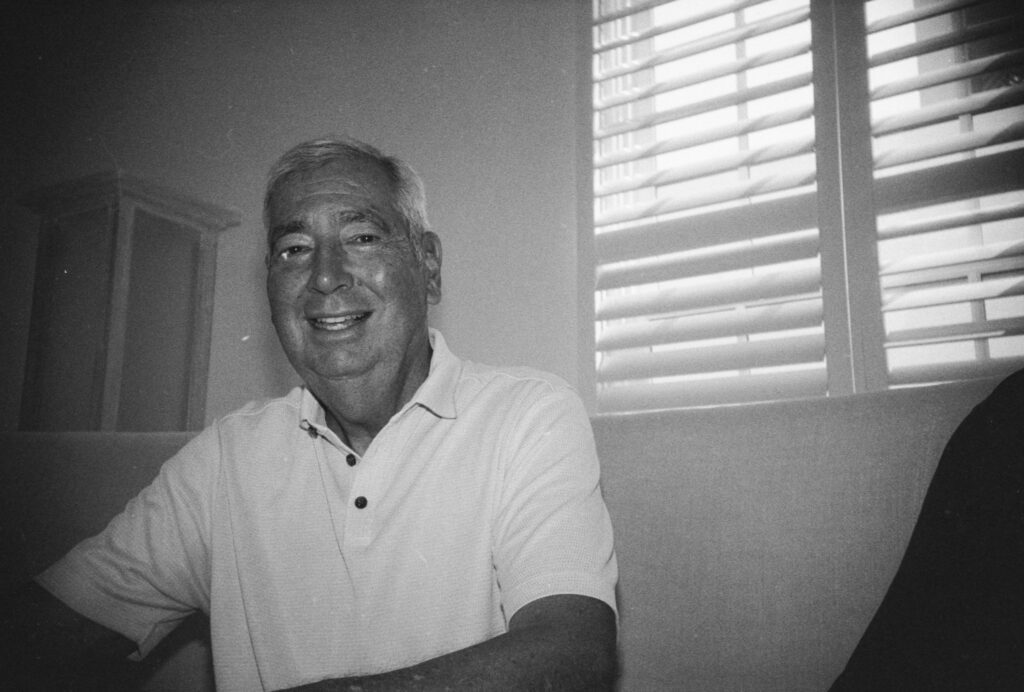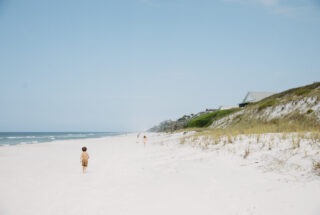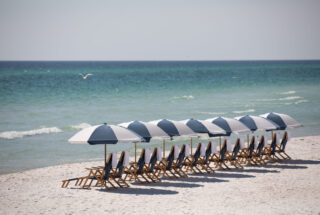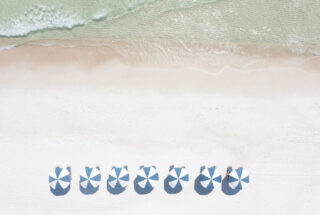More than once in my conversation with Ron Domin and Doug Bock, the concept of yin and yang arose—An interaction of opposites that leads to harmony. When we spoke, Ron was dressed in white, sitting in his light-filled, serene Alys Beach home, located on the back of the Nature Preserve. Doug was wearing a black shirt, speaking through headphones on a busy sidewalk outside of a coffee shop in Portland, Oregon, where he was visiting. The conversation flowed smoothly. We laughed a lot. They moved back and forth in their responses in a way I would indeed call harmonious.
The two began their firm, Domin Bock, in the wake of Hurricane Katrina, when they relocated to 30A from New Orleans. They designed their first home in Alys Beach in 2008, and have gone on to design sixty-three others. Doug had just done the math: sixty-four homes. The number is astounding, given the plethora of talented architects who work in Alys Beach. Also astounding is that they hadn’t thought to count before that moment. The number didn’t seem to matter. That they have designed beautiful homes that fulfilled their clients’ wants and needs—this would always be the point. And that they love what they do. The easy way they talk about their work. The easy way they relate to each other. That “fun” was the word they used most often in talking about the process. It is easy to imagine they’ll design dozens more yet.
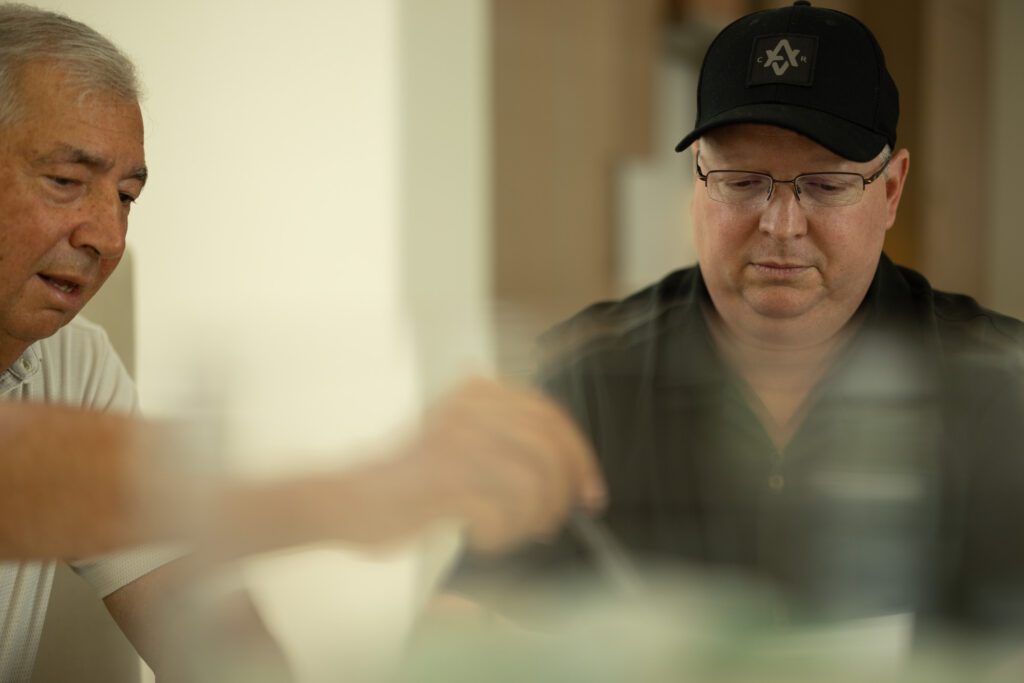

Cassie: Tell me a bit about your design influences in childhood or parts of your childhood that may have led you down this particular path.
Doug: LEGOs.
Ron: Yes, LEGOs.
D: That’s what we have in common.
R: Yes, we both like LEGOs. I grew up in Palm Beach, Florida, and my dad was in real estate. When I was in second grade, my dad was building a little strip shopping center and he took me with him to the architect’s office. This architect was so kind and he set me up at a little drafting board and I sat there drawing for who knows how long. When Dad came back over to the drafting desk, he saw that I had drawn the house that we lived in. He was fascinated by it and then he started taking me along on every trip to the architect’s office. I pretty much figured out in second grade that I was going to be an architect. I was actually the first one in my family to ever go to college and so it was a very, very big deal. My dad just sent me around to tour colleges—all on my own, not like they do now where parents go with their kids. I got fogged in at the Miami airport and ended up changing my seat to New Orleans to sit next to this gal who was heading back to Sophie Newcomb. She was picked up by her friend who ended up being co-director of admissions for the architecture school. They took me around that weekend and she got me admitted early decision to Tulane. Then I stayed in New Orleans, realizing that there is so much opportunity in the city compared to South Florida where I grew up.
D: I grew up in Ames, a midwestern college town with Iowa State there. In eighth grade, I put off making arrangements for career day until the last minute. I wanted to be a doctor prior to that but the only space available was at an architect’s office. Out of desperation I did my career day there. I fell in love with it. He was a professor at the school and he took me to some reviews and I saw all the creativity going on and all of the students who were working away all night, and I said, “Wow, I want to do that.” Since then, some of my friends are doctors and I’ve decided that that is not for me. I want a dry career, let’s just put it that way. There’s too many fluids and stuff [laughs].
C: The materials are quite different in architecture. Tell me about LEGOs.
D: Absolutely. I was obsessed with LEGOs and I found out ten years ago that Ron actually was too and I laughed about that.
C: So eighteen years into this partnership you find out that you both had the same childhood obsession. That’s cute.
D: I liked space LEGOs and Ron liked town LEGOs, but it was the same basic idea.
C: Tell me how the two of you connected.
R: After Tulane, I had a firm for some years. When Doug was three years out of school, a mutual friend thought that he was working in the wrong place. Knowing both of us, this friend thought we should be working together. We met up and liked each other right away and Doug started working. Three weeks later, Doug got married and went on a six-week honeymoon. I was like, “Whoa” [laughs]. So I hired Doug at my New Orleans firm and we worked there together for seven or eight years before Katrina. After the storm, when we moved the firm here [to the Panhandle], we reestablished it as Domin Bock and opened up on 30A.
R: We really got active here around 2008 when we got our first job in the area. I got so excited by just studying the Alys Beach houses and the courtyard concept and I was convinced then that I wanted to live back here. I think people can see when they meet us that we both believe in the community. I live here and love living here. I live in a simple house, but people know that we are committed to the neighborhood when they come. It’s a tricky thing living in a neighborhood where you’ve designed so many houses. Yesterday I was just going with my friends down to the beach and everybody’s so kind and they’re like, “Ron, just come over for one drink.” It’s like yeah, sure, and then ...
C: Where was Alys Beach in development when you moved there?
R: We really got active here around 2008 when we got our first job in the area. I got so excited by just studying the Alys houses and the courtyard concept and I was convinced then that I wanted to live back here. I think people can see when they meet us that we both believe in the community. I live here and love living here. I live in a simple house, but people know that we are committed to the neighborhood when they come. It’s a tricky thing living in a neighborhood where you’ve designed so many houses. Yesterday I was just going with my friends down to the beach and everybody’s so kind and they’re like, “Ron, just come over for one drink.” It’s like yeah, sure, and then...
C: If you go for one drink at all the homes you’ve designed there, your social calendar gets full quickly. And if you’re on the back of the property, I imagine you like a bit of space.
R: There’s real privacy here. I designed my house so that it’s very private. Instead of one big courtyard, I did double courtyards so my living room is in the middle of it all and it’s three walls of glass. You have complete privacy in this room which is really great for me.
C: Doug, you’re on 30A but not in Alys Beach?
D: I live down in Blue Mountain, about 25 minutes away. It’s gotten more traffic. I’ve had to add five minutes to my commute. But it’s a little quieter and more my lifestyle.
C: And provides a little separation from your work. So, given the number of houses you’ve designed in Alys Beach, how do you see the individual projects that you’ve taken on in relation to the community as a whole? How do you think about that in practice?
D: They’re all different. They’re in different parts of town and they have different community roles as we see it. Some of them are corner lots on prominent corners and are really important from a civic standpoint. Other lots are tucked away and kind of private and those people tend to be more tucked away, private people.
R: Our houses look like our clients. We try to listen to them. Some of our houses have exuberance, as some of our clients do, and some of our houses are understated. Not that Doug and I don’t have our own style, but we really try to listen and we try to make the house look like the client the very best we can.
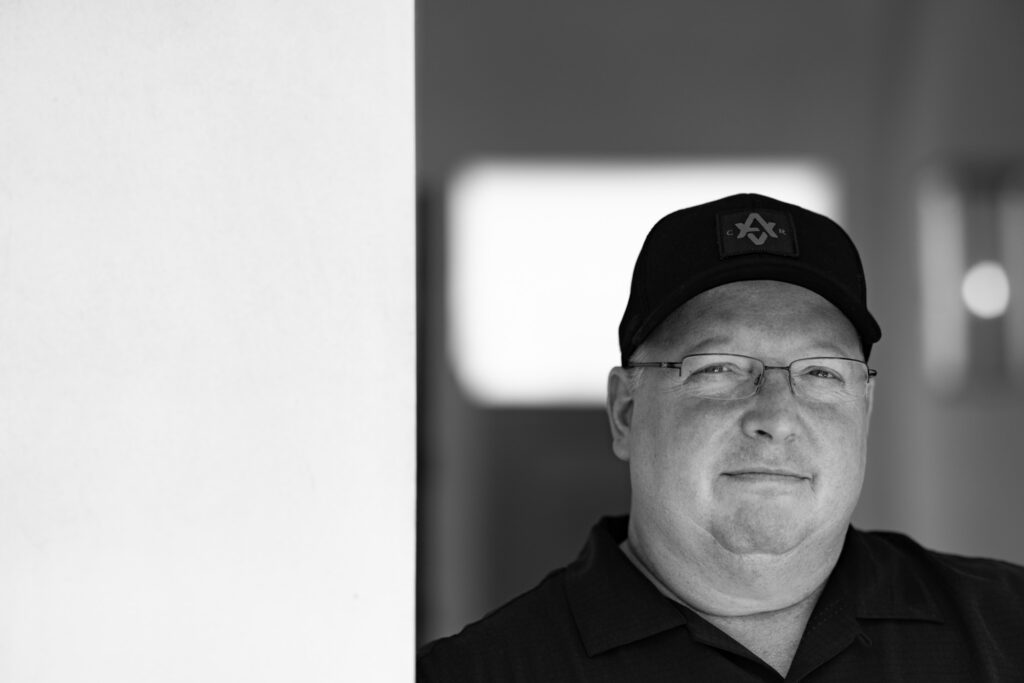

C: Is that a prescriptive process? Is there a questionnaire? Or do you go out for drinks?
R: Through all the years of doing this, we just try to start a dialogue early on. We try to really get to know the client. It’s why I love residential work because you really become a little family. We’re a year in designing this house and two years into building it so it’s a commitment to somebody for three years. Doug knows that I love the interview process. It’s kind of like going on a first date. Doug always teases me. He asks how it went and I say, “Doug, these are the nicest people I’ve ever met in my life.” And he says, “You always say that!”
D: But you do [laughs].
R: I still have a lot of fun doing this. I am doing the initial meetings with the people and the getting to the bottom of what they want in the house and writing up the program and then I do the first cocktail napkin sketches usually. Then Doug and our team in the office are actually, physically, doing the many pages of working drawings.
D: I’m fascinated. Ron is the most intuitive person that I’ve ever met and he takes away stuff from the meetings that I didn’t even hear or didn’t pick up on. I mostly write the words that people say, and Ron looks beyond the words and says, “Well, he’s nervous about building the house but she really wants it and he’s doing what she wants to do,” and I’m like, “They didn’t say that!” And he says, “Oh, they didn’t even know themselves.” He’s like a psychiatrist.
R: Cassie, I like doing everything in person. I would be happier if you were here right now in the living room and we were having a cup of tea and doing this. There is so much in body language and so much in unsaid words—sometimes people are afraid to even really tell you and you have to get it out of them. You can do it if you’re in front of somebody and they’re comfortable with you; then they’ll start opening up and telling you what they really want.
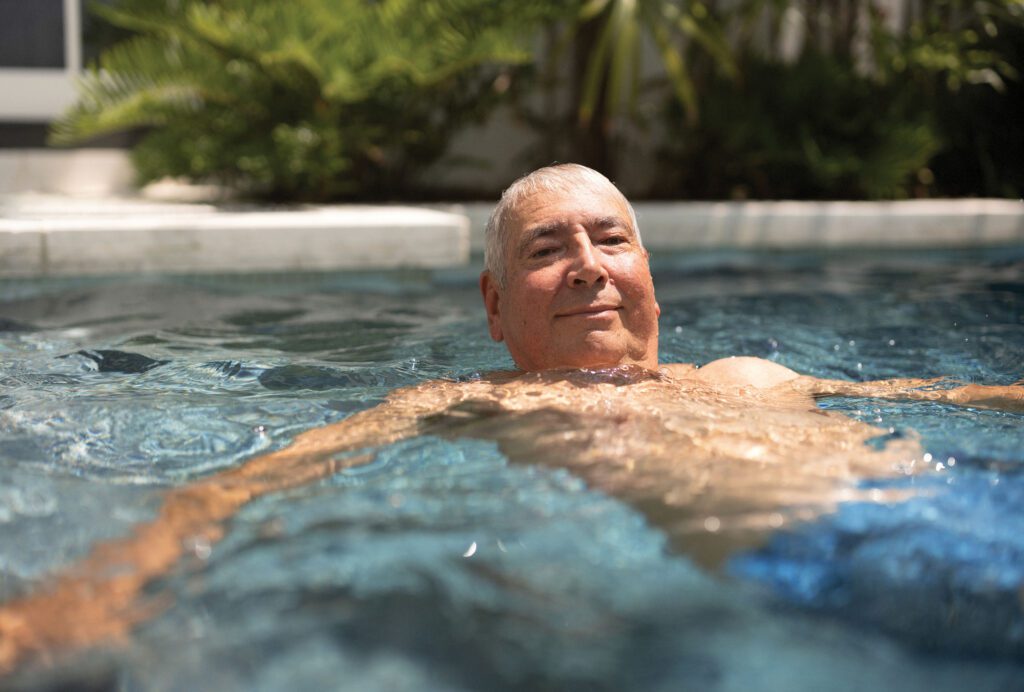

C: There is a line on your website about creating a home. Not to put words in your mouth—I just want to say this and hear your reactions. You have this relationship with a person, there is an intimacy. What does home mean? What is it like to design a space in which people feel at home? How do you define home as a feeling or space or design?
R: What’s so great about Alys is yes, these are homes, but in so many ways, these are fantasy homes. The beginning of my career was in the primary home market. It is really important—it’s where we spend Thanksgiving and Christmas. Alys Beach houses can be so much more playful for the word ‘home.’ I try to let people know that we can do things and have fun. I want people to have fun when we’re designing. I can walk in somebody’s house and know if they struggled through the whole process or if it was a joyful, meaningful process and they had fun doing it. Doug and I want people to have fun. To me, home, in the Alys Beach sense, is a fantasy home, a playful home. We can do things that you wouldn’t do in your regular house with fountains and water features. Even light; our houses are light-filled houses. In so many cases, you couldn’t get another window in them. Doug, how would you describe it?
D: I would agree with that. It’s a chance to do some Santorini house that the clients would never dream of doing back in Atlanta or Birmingham. It’s a chance to live differently. We have some people who insist on building like they did back home. I call it Dallas Beach architecture because they’re jamming whatever is in their house back home into a beach house. I think instead it’s a chance to live in a different way, a more carefree, light way, a less stressful way. I feel like maybe the earlier, pre-cell phone days were a little better because you were off the clock for real. When you went out of town, you really went out of town. I guess I’m getting old but I look back to those days wistfully. But it’s also possible to carry on a business—possible to travel more than we did in the old days. I’m not sure which is better or worse.
C: It must be fun. Do you exclusively do second homes at this point?
R: Most of our work is in the second home market because Doug and I are just enjoying it so much.
C: You get to focus more on beauty and playfulness and not practicality and where are shoes going ... You’re thinking about them but they’re not your first focus.
R: Clients are always more relaxed in this market too. In the olden days, you would go see your travel agent and you were always in a good mood because you were booking some kind of fabulous trip somewhere. When people come see us, most of the time they are coming here to Alys Beach and they’ve just been to Fonville Press and had two cappuccinos and they’re just in a good mood. At this stage in my life, I just really like it a lot.
C: What a gift to give them too. This other place.
R: It’s good for all of us.
C: Do you see art as part of your process? Do you consider what you do an art form?
D: I make this analogy sometimes: I think it’s like cooking. Our job is not to reinvent food. It’s to serve it in context, pair it with the wine, pair it with the right details that make it special. But I’m not serving molecular gastronomy beef foam. I’m preparing and serving a really good steak. Perfectly prepared and perfectly realized and paired with a Manhattan or a vintage wine—the right pairing. That’s how I think of it. Believe it or not, it may be more a craft than an art.
C: There can be art in craft too. I think if you do anything very well then it can be art. If you give it your attention and devotion ...
D: It’s not all reinventing. We’re always pushing against that limit, but I’m kind of glad for the limitations on our work. As artists, we can start to get pretty weird. The town architect is always reigning us in, and I think it’s healthy for the town.
R: Doug and I both have a lot of energy, and that energy shows up in our designs. The enthusiasm sometimes gets out of hand [laughs].
D: Then you get thirty other architects with the same energy and it could be a real hodgepodge.
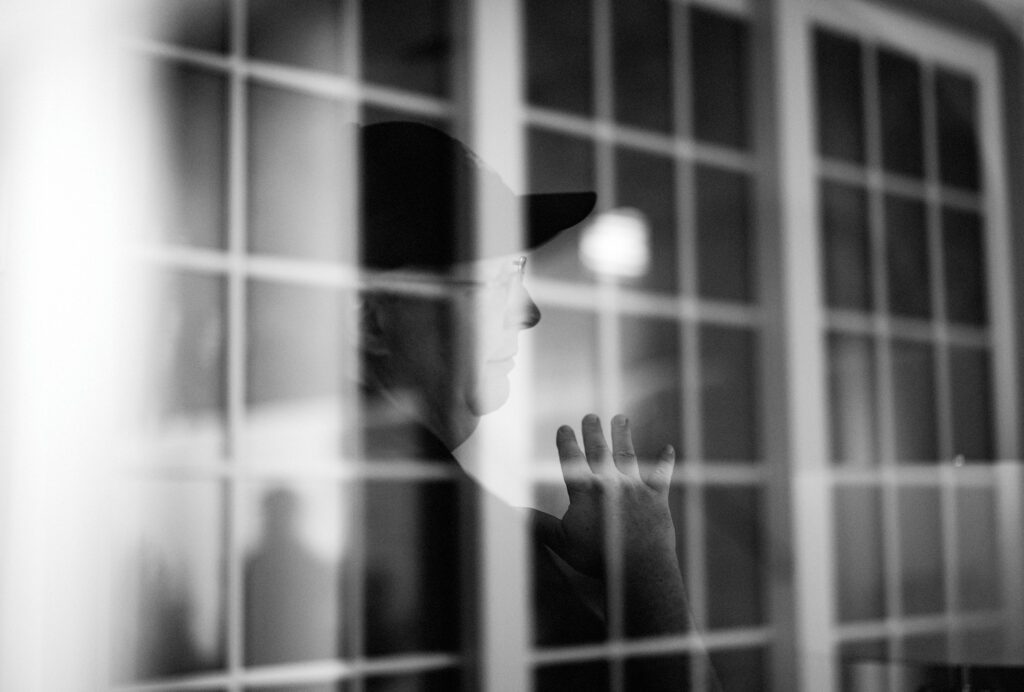

C: That’s one thing I’m always curious about. I have young kids so I always think about how limits actually help them to flourish. It helps them to understand the world. I think about Alys Beach in that way. There are so many limits—perhaps it could be stifling, but it could also bring out the best in you.
R: Cassie, that’s so true. You’ll get a 36-foot-wide lot that has a house on one side and a house on the other side. So you have 36 feet by 85-feet-deep and you have to create something in that rectangle with a building on either side of you. You may think that sounds limiting, but it’s endless what you could do in that area.
C: Ultimate exercise in creativity, it seems to me.
D: Yes, we start with our limits and we work in from there and see what’s possible. We push a little, but we owe it to our clients to do that. Some things we achieve and some we don’t, but the net effect is actually pretty magical.
C: If I were to walk around Alys Beach, would I be able to identify which homes you designed?
R: No, you could not walk the neighborhood and know. We do that on purpose. Our houses are so different from one another and to me that’s a great deal of the fun. Coming up with an original concept each time. I think people are coming here to fulfill their own dream and make their own individual statement and we try to make that happen for them.
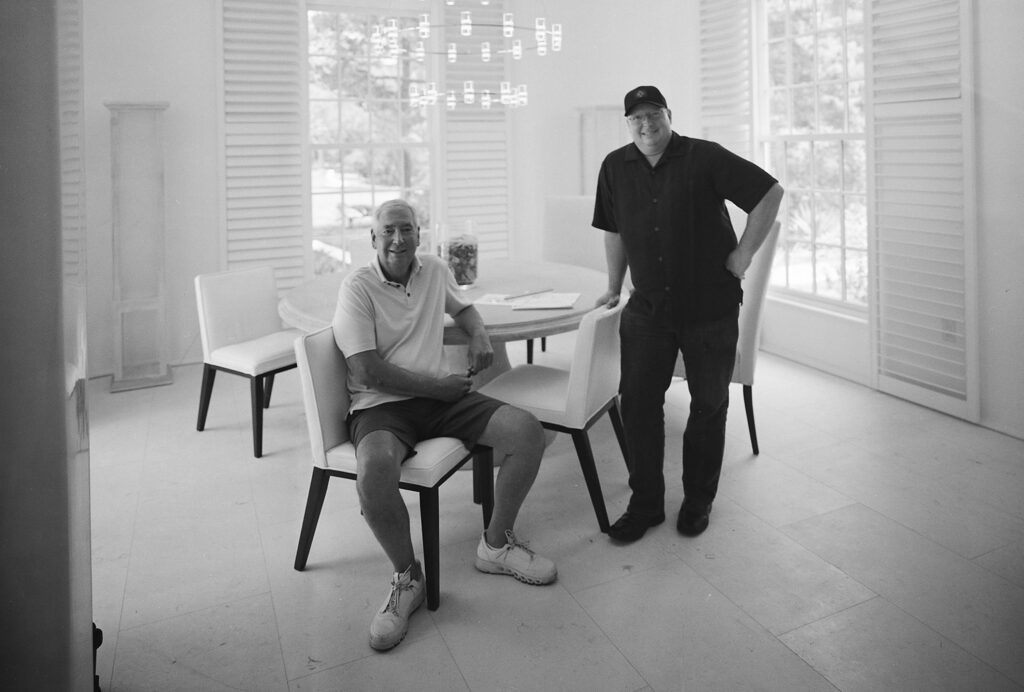

C: There is something about Alys Beach too—the fact that it’s not an assault on every sense at every turn you make; the design sense is seamless and there’s something very soothing about that.
R: It is. That speaks to me, too.
C: What inspires you both in your daily life? You say you both have energy, and I feel that creative energy from both of you. Where does that come from, other than within?
R: Mine comes from within. And also, from where I live. I am steps away from getting in the Gulf of Mexico, the warm, salty water—I can’t tell you how much time I spend in there. I have a 50-foot -long pool in my house here and then I am on this park and green that I’m looking out on right now from my living room. Just the environment that I live in. And then, Doug calls this the yin and yang, but then I go back to New Orleans and I live up on Audubon Park and the first thing I do when I get out of the car is head into the park. It smells so different from the beach, looks so different, sounds so different—the birds. It’s the combination of the two. Doug and I both travel, and we just love going to places and trying to incorporate what we’re seeing back into our designs.
D: My folks moved out to Colorado when I was in college and I love being out there because it’s so yang. It’s mountains and bright sun and dry and desert, and then I come back to the beach, and my wife’s family lives in New Orleans and so we go over there a lot too. They are three such different places and I really get energized from the different climates—even just the humidity in the air. I love feeling different places.
C: Keeps you going, and growing.
R: For sure.
D: There’s also challenges in travel that keep you sharp. Your flight’s canceled; your rental car isn’t available. It keeps you pointy [laughs].
C: And it shows you different sides of yourself too, which I think is really important. To keep engaged with life. Do you have favorite places you like to travel, other than “home” places?
R: We both love Venice. The combination of the water and the buildings. That’s our favorite place.
C: I think creativity begets creativity. Do you have any other creative pursuits?
D: I read a lot. And I do sketches. I’m not particularly musical, which I know is rare among architects. I like music, but I like other people playing it. Ron?
R: I haven’t pulled out my trumpet in years. That’s an interesting question. I don’t want to say that Doug and I spend all of our time doing this and not following other pursuits, but we both have pursuits of family and friends. If I have any time, I love spending it with them. I put a huge amount of energy into the creative outlet of my work so I feel like I have that. The rest of my time I want to be with my family and friends.
D: The last few years have been so busy, also, that when I’m off the clock I’m just vegging.
C: Yes, if you have a day off, what are you doing?
R: I’m riding my bike. I’m always in motion—a body in motion. I’m the one who lives here so I get up, day off or no day off, and I ride my bike around all the job sites. I get such a kick out of being with the builders and the subs. Not that I’m doing that on my day off, but I’m just out and about. I’m the guy you always see going by on his bike.
D: I’m a little different. I’m a lot of fun during the work week, but I actually like my downtime. I will go to the jobs on Sundays when no one’s working. That’s when I can concentrate and see what’s really going on. I need quiet to look at things. I usually ride my bike over and spend a few hours on Sunday looking at the projects.
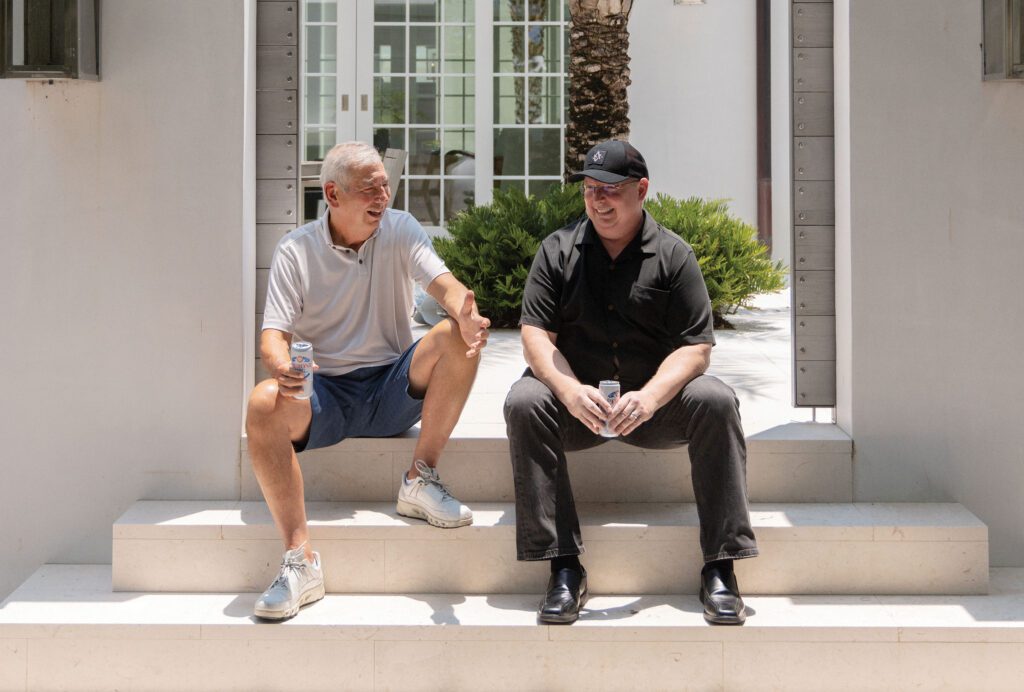

C: Do you have specific ways that you check in with each other? Do y’all have a routine?
R: Now, through the miracle of cell phones, it’s so easy to communicate. So we are in constant touch with one another. There’s no set thing like at nine in the morning, I call Doug; I call Doug constantly.
D: We text a lot.
R: We’ve done this long enough that I’m afraid Doug can read my mind so we don’t necessarily have to check in all the time because we’ve been doing this for twenty-eight years.
C: Do you have a specific way that you start your day, something you do, no matter where you are?
D: [Laughs] Well, Ron gets up earlier than me. I’m on the late shift.
R: I love the morning. I am up by 6:30 a.m. and I purposely try not to look at my cell phone so I have this period of time to myself. Breakfast is my favorite meal of the day so I’ll make a big breakfast and then I just kind of get into the day. I take the very first part of the day for myself.
C: That’s beautiful.
D: Whereas I sleep late and start my day in an absolute panic.
R: [Laughs].
C: So, I want to be Ron, but I am Doug.
D: We all want to be Ron.
C: I can’t tell you how much I enjoyed this. You’re both such a pleasure, and so easy to talk to.




